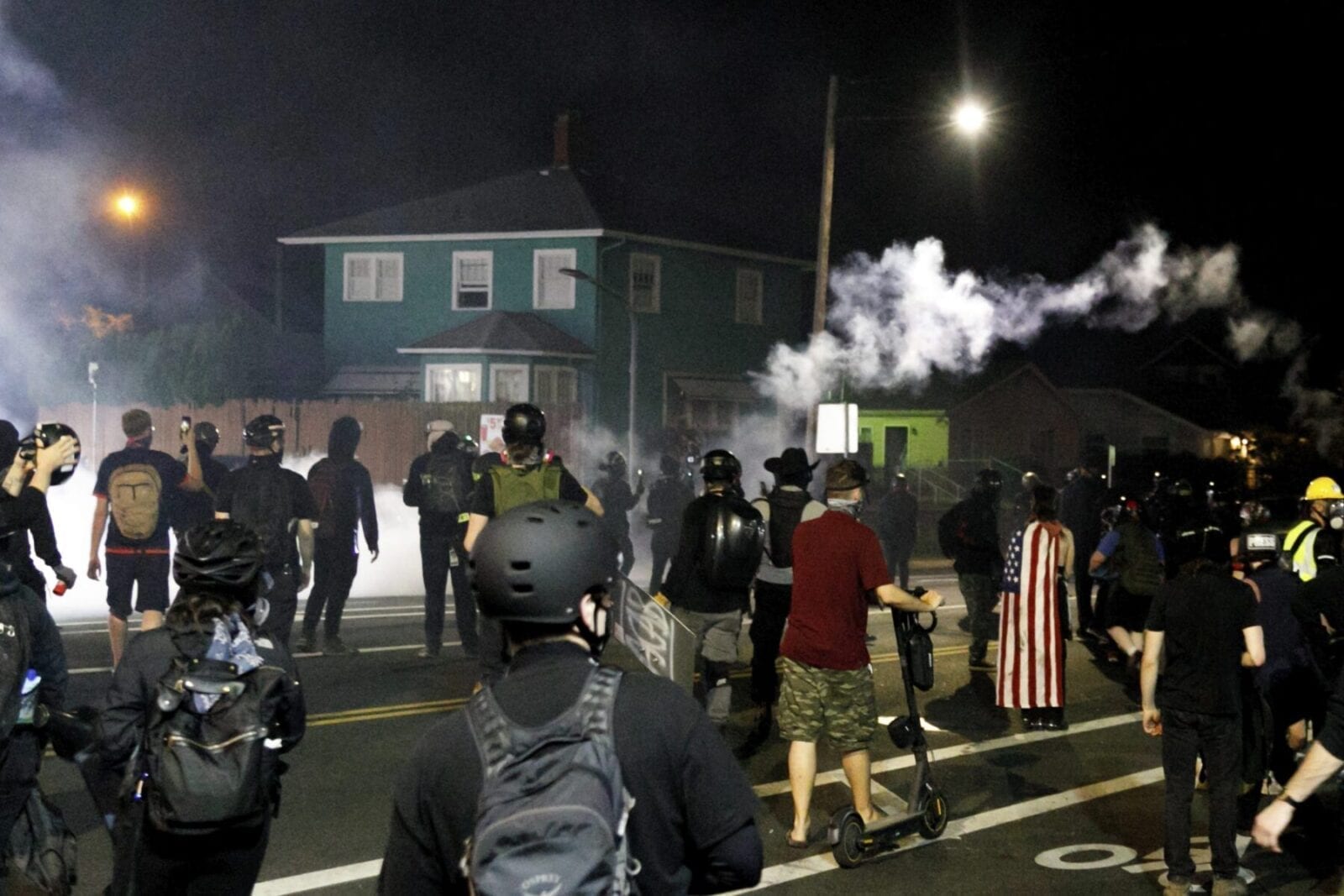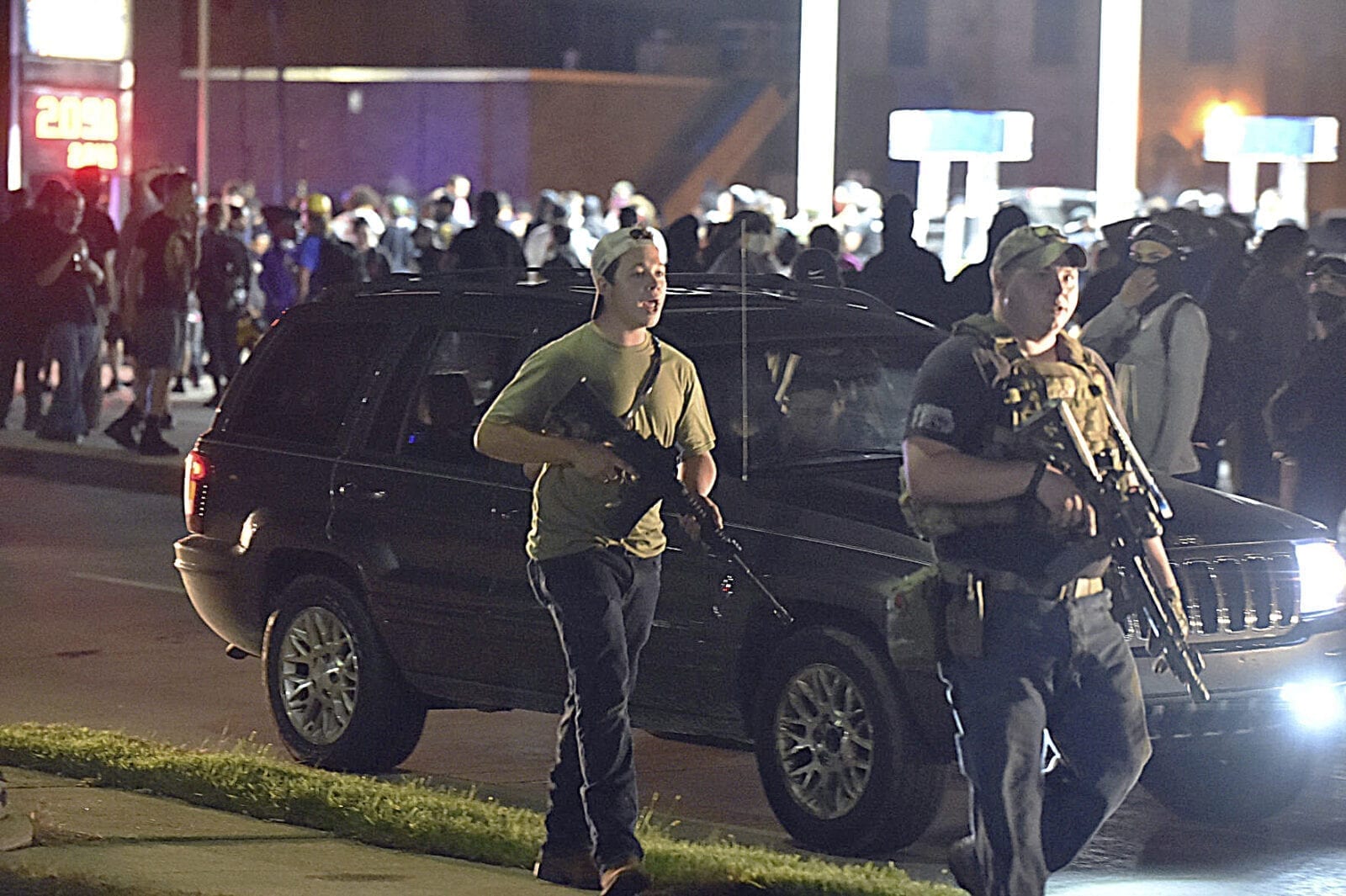Industry on display: Former manufacturing sites now draw tourists
By Kellie B. Gormly

Police throw smoke grenades as they leave. Hundreds gather at the Portland, Oregon Police Association building on August 4, 2020 to protest police brutality and racial inequities. (Photo by John Rudoff/Sipa USA)(Sipa via AP Images)
I never imagined I’d feel compelled to share the hard lessons I learned in war zones with Postindustrial Americans expressing their First Amendment rights. But in the wake of the killing of a protester by a self-identified militiaman and Trump supporter, those lessons might prove prescient
~By Carmen Gentile
We are standing at the edge of a dangerous precipice in Postindustrial America.
Self-styled vigilantes and militiamen (they’re almost all men, with a smattering of female members) and other self-appointed “defenders of The Republic” have become all-too-common sights at protests in Michigan, Pennsylvania, Ohio, Kentucky, and, with recent, deadly consequence, in Wisconsin. There, a 17-year-old, self-identified, Trump and Blue Lives Matter supporter is suspected of killing two people during the Kenosha demonstrations. The demonstrations erupted after Kenosha police, responding to a call, shot a Black man, leaving him partially paralyzed.
What happened in Wisconsin is reverberating around a region already fraught with tensions. Racial justice protests are ongoing in cities like Louisville, Detroit, Chicago, and elsewhere. Some with a misguided sense of patriotism inspired by the toxic nationalism of Trump and his sycophantic friends at Fox News and other conservative media will surely be inspired by the violence in Wisconsin and the outrage it has caused.
As such, those who continue to speak out in the streets against tyranny and racial injustice must prepare for the eventuality of there being gunmen in their midst.

Kyle Rittenhouse, left, with backwards cap, walks along Sheridan Road in Kenosha, Wis., Tuesday, Aug. 25, 2020, with another armed civilian. Prosecutors on Thursday, Aug. 27, 2020 charged Rittenhouse, a 17-year-old from Illinois in the fatal shooting of two protesters and the wounding of a third in Kenosha, Wisconsin, during a night of unrest following the weekend police shooting of Jacob Blake. (Adam Rogan/The Journal Times via AP)
During my career covering wars and armed uprisings, I’ve learned a handful of survival strategies that served me well … that is, when I followed them. The one time I didn’t heed my own rules, I got hurt.
So, here are some tips on how to survive the worst that can happen during a protest — something I never thought I’d proffer to my fellow Americans exercising their Constitutional rights.
Plan ahead: If you’re marching in a large city or a small town, look at a map of where you’ll be. Familiar yourself with the streets and landmarks. Ask yourself “what will I do if there is a shooter?” Where are the best places to take cover? What’s the escape route? (More on this below)
Don’t march alone: Even though protests are by definition a group activity, be sure to use the “buddy system” by having a designated someone there with you, albeit at a social distance. Keep tabs on one another and watch each others’ backs. Stay in constant communication. Pick a place to meet in the event you are separated and keep your phone handy.
Be vigilant: While exercising your First Amendment rights to free speech, keep your eyes peeled. Constantly scan ahead of where the crowd is moving. However, also keep tabs on the people closest to you. Look out for weapons concealed under coats or long shirts. Never stop surveying your surroundings, and keep your head on a swivel.
Listen to your gut: When your instincts tell you something is fishy, walk away. Don’t be stupid. This is the rule I ignored when I was injured in Afghanistan. I had a hinky feeling that something was wrong just moments before I was shot. Had I listened to my inner voice telling me to get out of there, I may have avoided injury.
Be prepared: You should already be wearing your mask to prevent virus spread. But in the event there is violence by police or gunmen, have a plan. If tear gas is fired, soak a bandana in water and wear it around your nose and mouth (over your existing mask will work as well) for added protection. Move upwind to escape the gas. Stay low. Make sure you have plenty of water to remain hydrated and keep your bandana wet. Also, wear a belt, which in the event you are shot in an appendage, can be used as a tourniquet to staunch the bleeding until you receive medical treatment.
Do not resist arrest: The unfortunate lesson of the Portland protests is that the unmarked, camo-wearing, federal agents are all-too keen on rounding up protesters with impunity and spiriting them away from protests in unmarked minivans. If you are picked up by police or federal authorities, remain calm, don’t resist, and keep your mouth shut.
When the shooting starts, get down: Stay as low as you can and cover your head. Don’t run unless you are standing next to the shooter. If you can, quickly take cover behind a vehicle (the engine block offers the best protection from high-powered weapons like the AR-15) or something else sturdy enough to stop a high-caliber bullet from a weapon designed to leave a hole in you the size of a grapefruit.
As much as it pains me to write this, considering the necessity of such precautions illustrates this country’s descent into madness, I hope they prove valuable and keep safe those risking their lives to speak out against injustice.
Thank you for taking a stand.
Postindustrial founder Carmen Gentile has worked for some of the world’s leading publications and news outlets including The New York Times, USA Today, CBS News and others. His book, “Blindsided by the Taliban,” documents his life as a war reporter and the aftermath of his brush with death after being shot with a rocket-propelled grenade in Afghanistan. Reach him at [email protected].
By Kellie B. Gormly
By Kellie B. Gormly
Welcome to Postindustrial, a multimedia outlet covering the Rust Belt, Appalachia, and Postindustrial Communities around the world.
News/Opinion/Art/Travel/Lifestyle